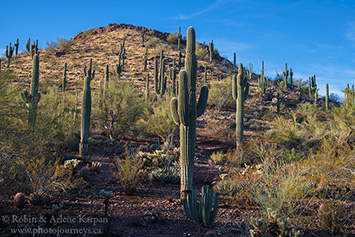
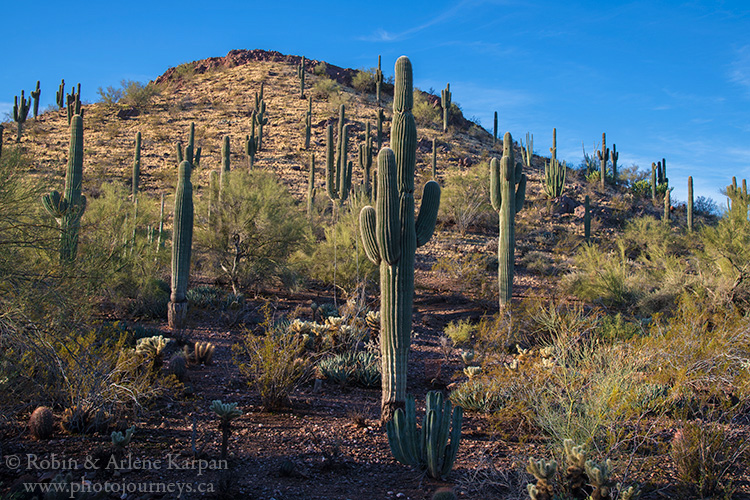
You certainly don’t have to be a plant geek to appreciate the Desert Botanical Garden in Phoenix, Arizona. While there is more than enough detail to satisfy the most avid botanist, everyone can appreciate and learn about the richness of the Sonoran Desert, and of deserts in other parts of the world.
If you thought that deserts were mostly sand with only an odd stunted plant here and there, this place dispels those preconceptions in a hurry. The plantlife can be incredibly rich and diverse with the Sonoran Desert in particular having some of the coolest-looking cacti anywhere.
The Desert Botanical Garden is among the top attractions in Phoenix, with close to half a million visitors every year. It boasts the world’s finest collection of desert vegetation– over 50,000 plants throughout its 140 acres. Many exhibits focus on the Sonoran Desert that surrounds Phoenix. The collection includes hundreds of rare, threatened, or endangered species that you may not see elsewhere.

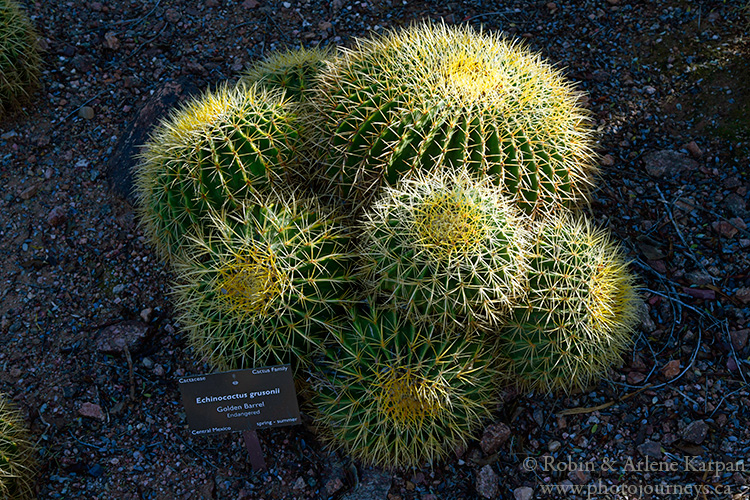
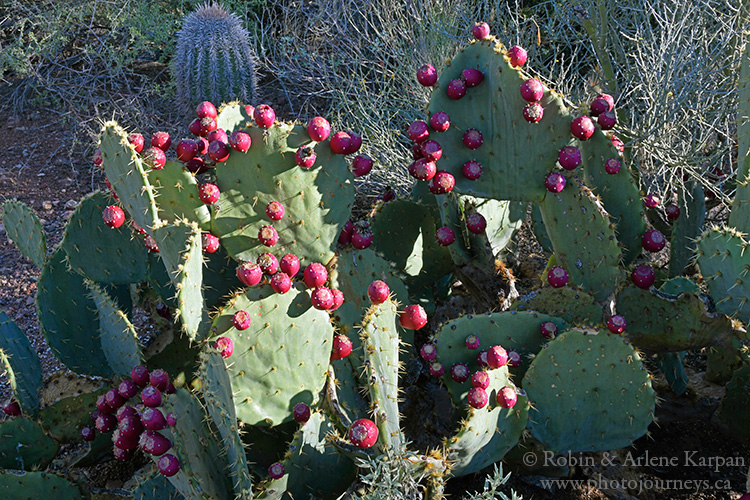
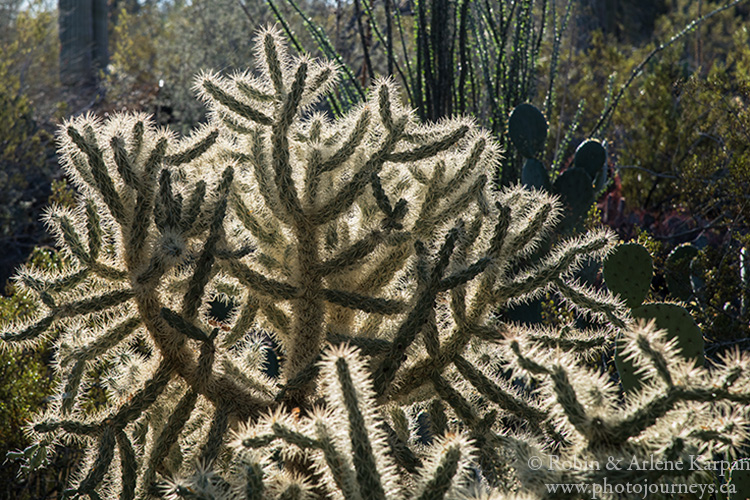
Five Themed Trails
The gardens have five loop trails, each with a different theme. The Desert Discovery Loop is at the centre with side paths leading to a Heritage Garden, Agave Yucca Forest display, and a variety of cacti and succulents. Another loop highlights the plants and people of the Sonoran Desert, and how early inhabitants such as the Western Apache and Tohono O’odham used local plants for food, medicine, and building materials.
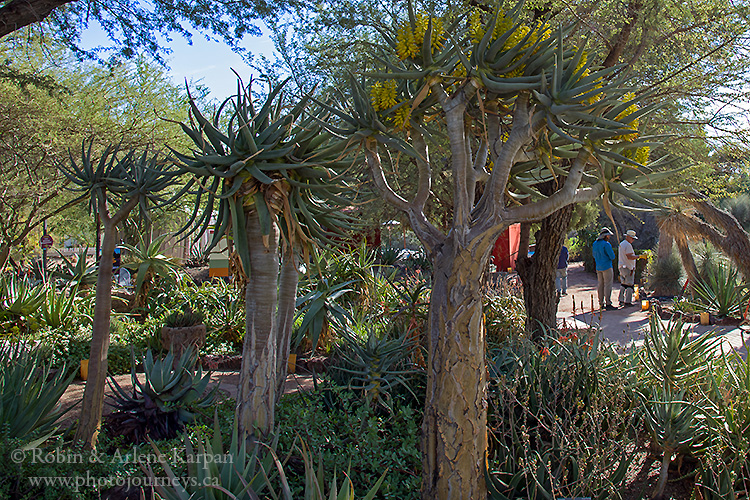
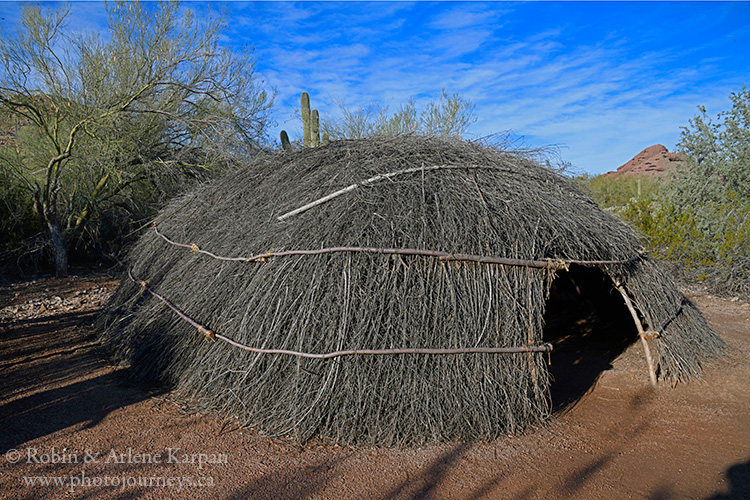
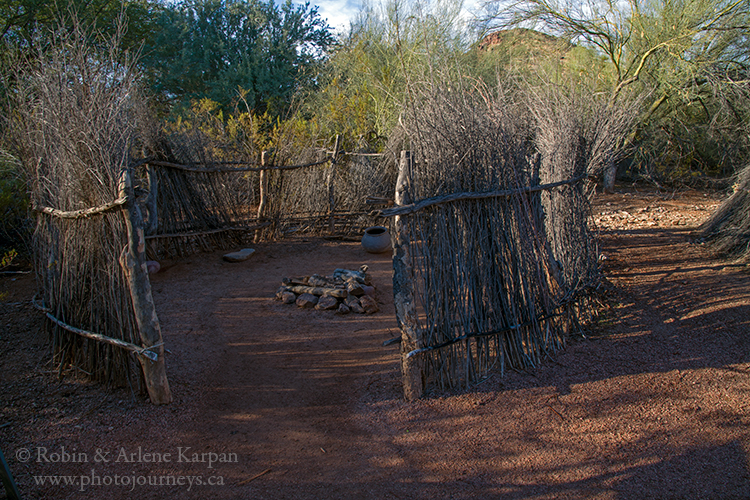
The Sonoran Desert Nature loop has great views of the mountains that surround the botanical garden. The hillside is covered in the iconic saguaro cactus with their upturned arm-like branches found exclusively in the Sonoran Desert which takes in much of southern and western Arizona, the southeastern corner of California, and parts of northwestern Mexico. These slow-growing plants can live for up to 200 years and reach up to 18 metres in height.
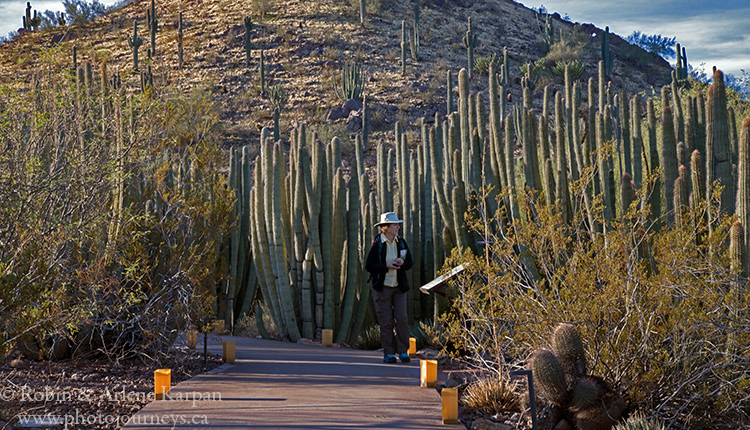

The Centre for Desert Living Trail demonstrates ways to live in harmony with nature in a desert environment. We don’t often think of the desert as having a lot of colour; however, a walk along the Desert Wildflower Loop shows just how much colour there can be, with blooming cactus and wildflowers displaying their brilliance at various times of the year.
Three species of hummingbirds live in the gardens (Anna’s, Costa’s and Black-chinned), with the Wildflower Loop being the best area to find them. Even in mid-December, we spotted a few hummingbirds visiting the blossoms looking for nectar. If you come in spring, take the side path off the Desert Wildflower Loop to the Butterfly Pavilion where special exhibits are in place between late February and early May.
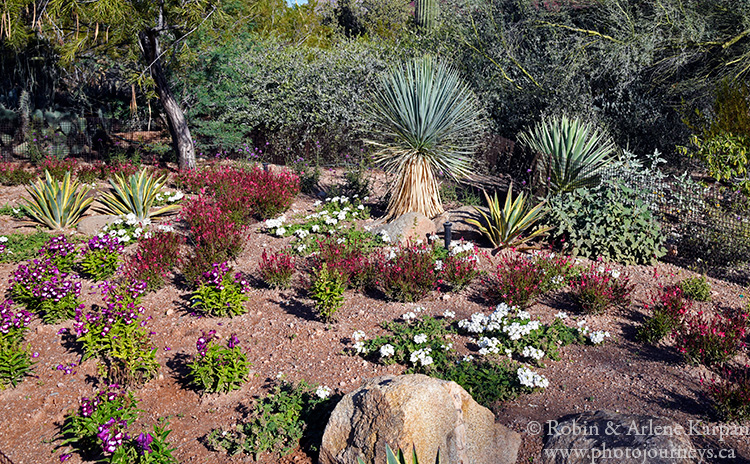
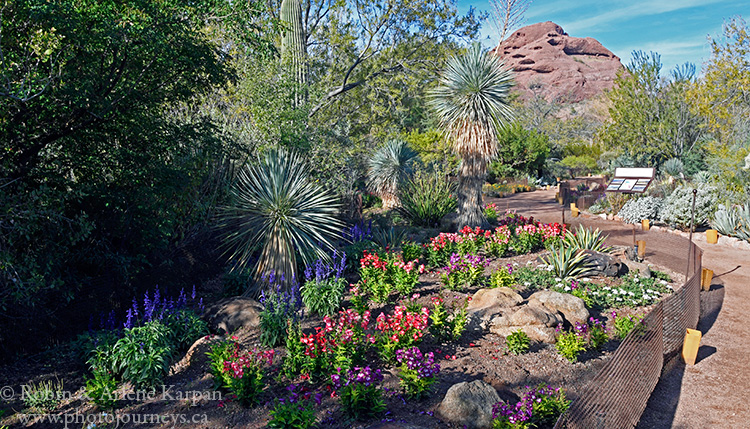
You can wander around on your own or take guided tours that depart at specified times – no extra charge beyond the general admission. Volunteers stationed at tables throughout the gardens answer your questions or demonstrate various aspects of desert plants: cactus identification, or how to tell the difference between similar-looking aloes and agave, for example. Most intriguing was one demonstration showing the internal structure of a large cactus. You might think they would be mushy inside, but some have substantial ribs and frames that support them, making them more like trees.

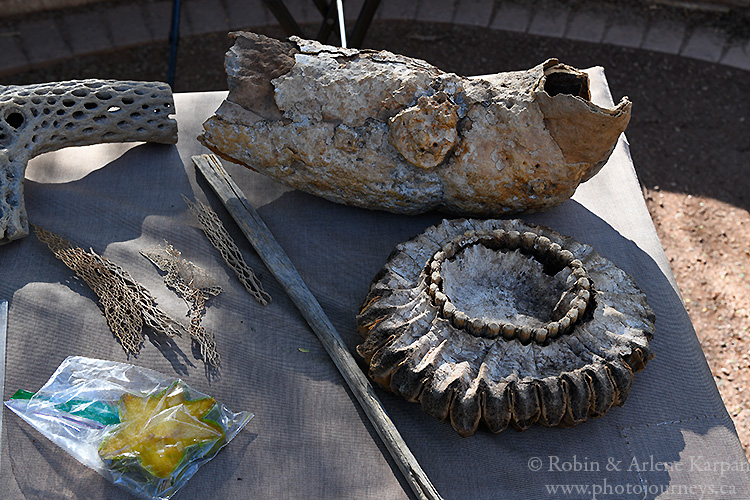
The gardens are also known for their signature restaurant, Gertrude’s, named for environmentalist Gertrude Devine Webster who founded the botanical garden in 1939. The superb garden setting is one reason why it’s rated highly among the best patio restaurants in Arizona. Try their drink Cactus Chi made from prickly pear water and chia seeds.
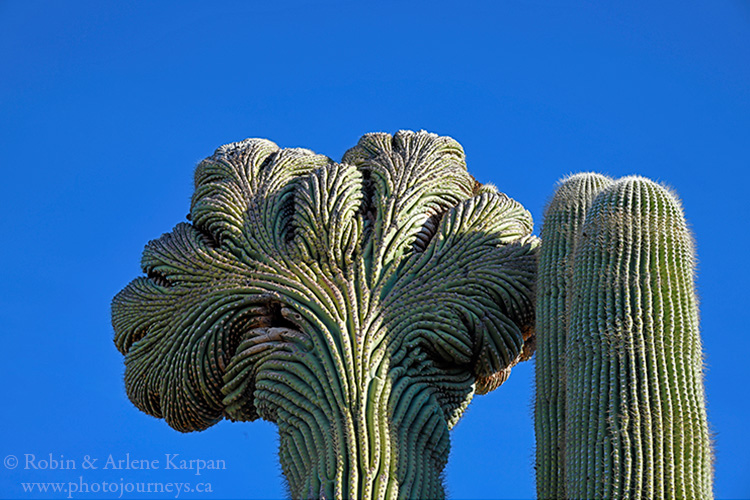
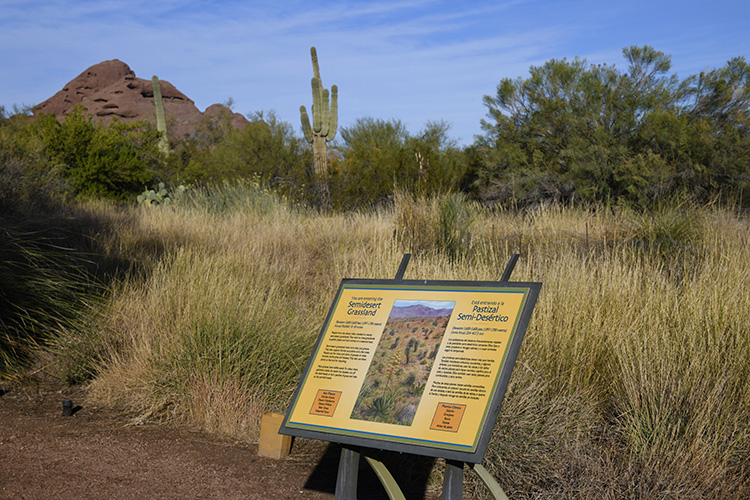
The Photographic Experience
This is the best spot we know of anywhere to find such a wide array of cool-looking cacti and other desert plants in one place, mostly in a natural setting. Along the Sonoran Desert Nature Loop Trail, the views over the hillsides make you feel as if you’re in the midst of the desert rather than in a city. Wide-angle lenses will be useful for most shots, although a telephoto will be handy for close-ups or to try to capture some of the birds and butterflies attracted to the rich habitat.
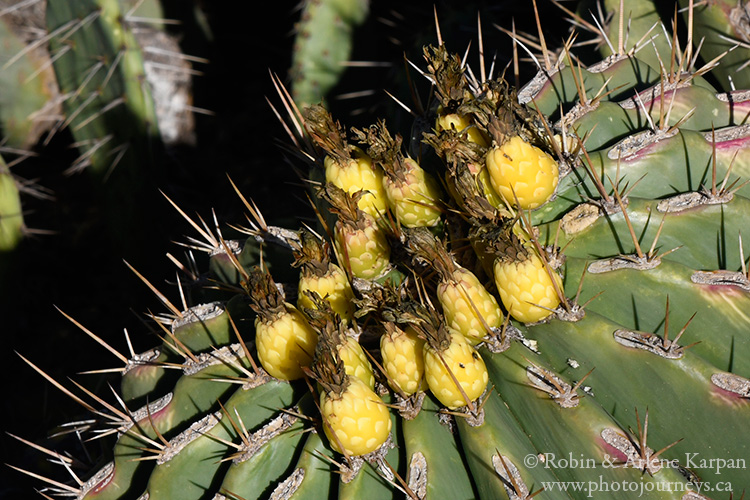
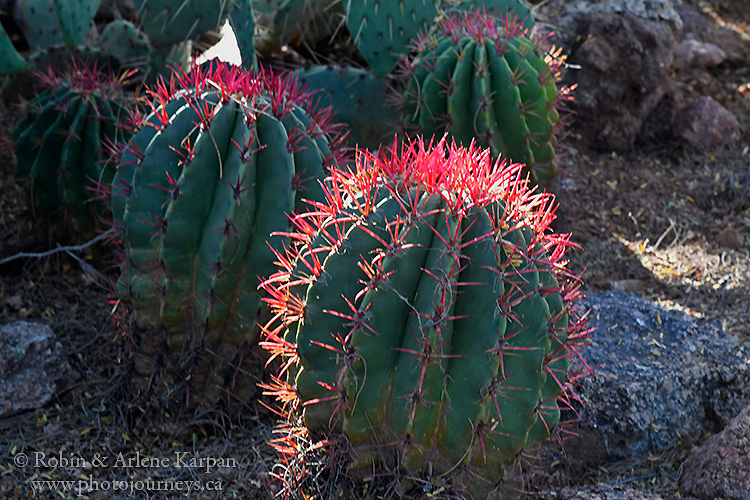
If you’re an avid photographer, go early. Ideally, arrive when the gardens open at 8:00 am. In winter, the sun will still be low in the sky, with warm light on the plants and terrain. Best of all is the spectacular backlighting on the cacti, many of which seem to glow in the low sunlight. A bonus is that there are fewer people around as well. During our visit, there were only a handful of others for the first hour or so after opening, then by mid-morning it got a lot busier.
For more details see the Desert Botanical Garden website or Visit Phoenix.
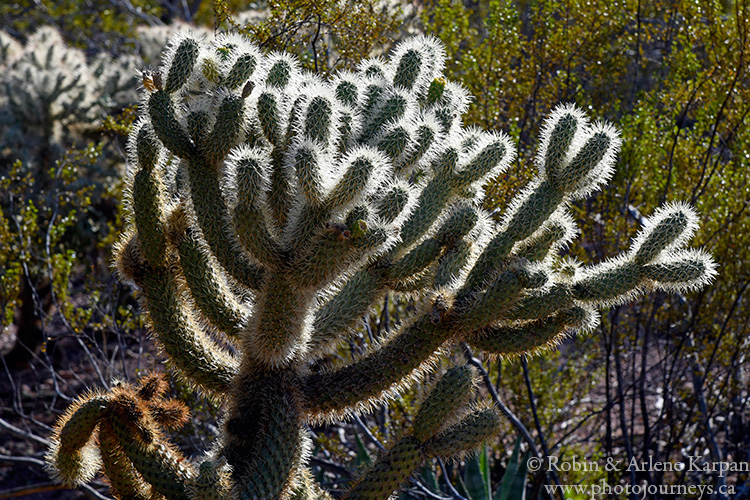
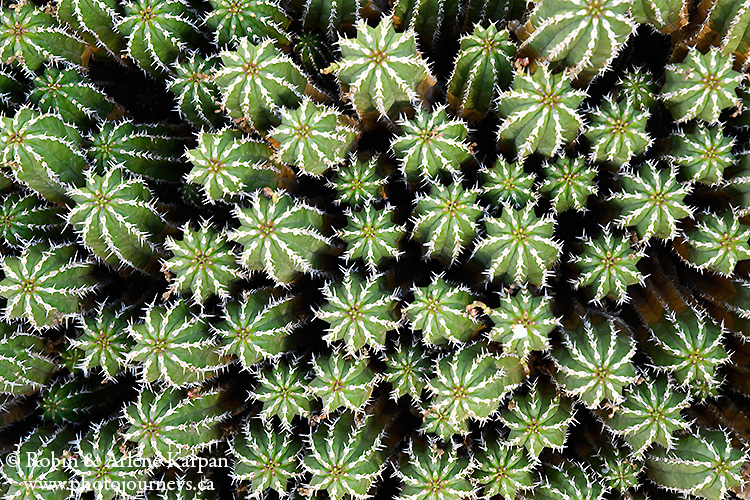
More Phoenix ideas you might enjoy
Hot Air Ballooning in Phoenix Phoenix’s Hole in the Rock Six Ways to Enjoy the Outdoors in Phoenix
SUBSCRIBE to Photojourneys below
Feel free to PIN this article
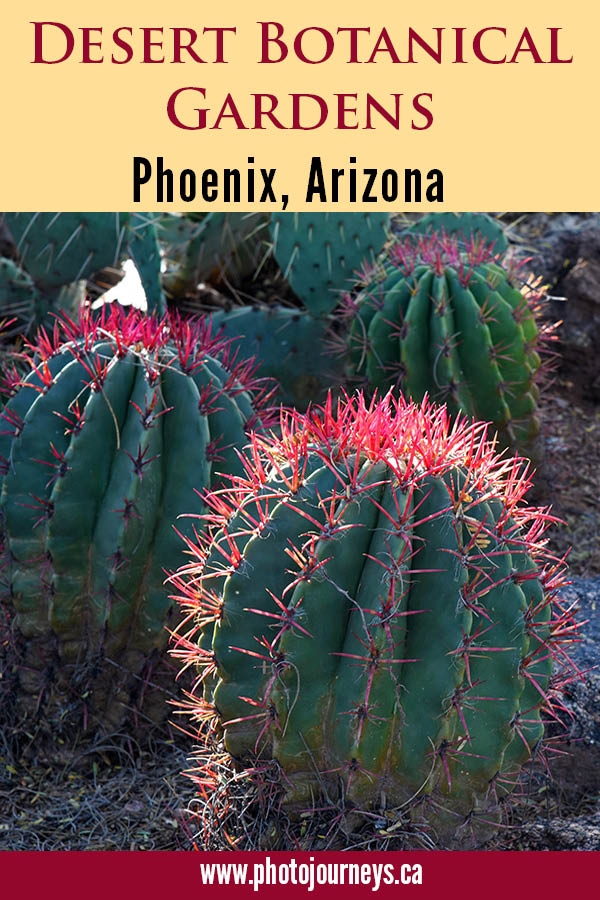


On a sunny Sunday with blue skies we went to visit the Desert Botanical Gardens. This Botanical Garden is very different from other gardens we know in the city of Phoenix, almost in Scottsdale, in the area of Papago Park, where the Phoenix Zoo is also located. The Desert Botanical Gardens alone has 65 acres of cultivated area and more than 50 thousand plants. It is a fantastic landscape, the collection of plants is very different from everything I had seen before.
You’re right. It’s a wonderful and surprising place to visit and learn about desert plants from around the world.